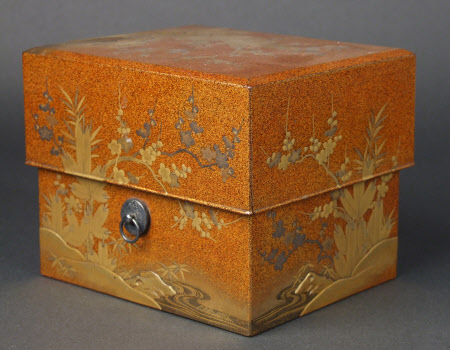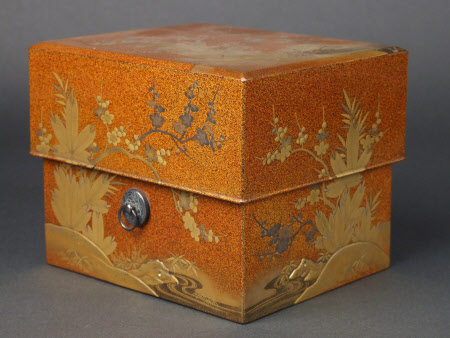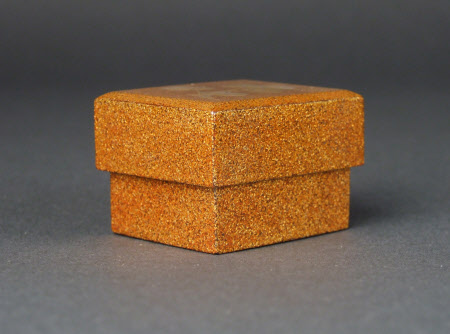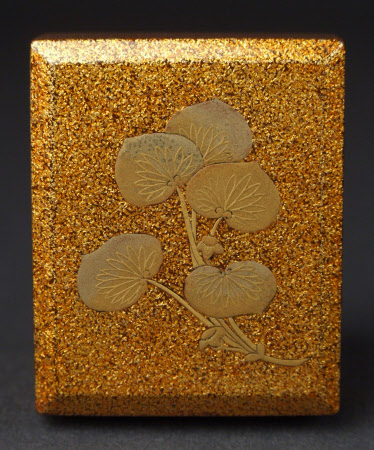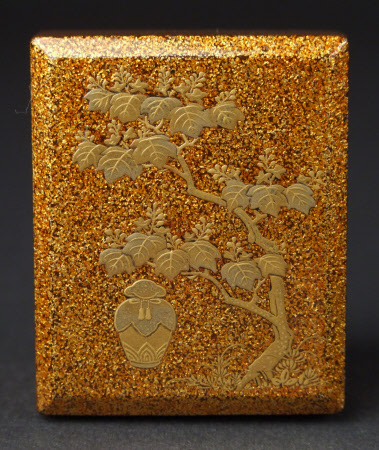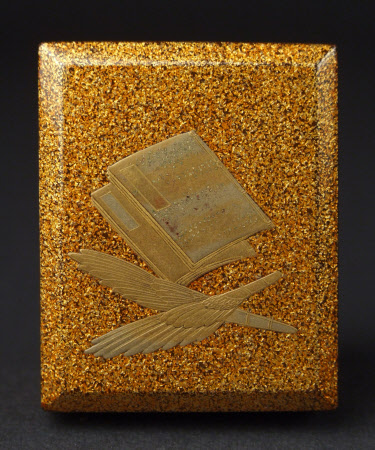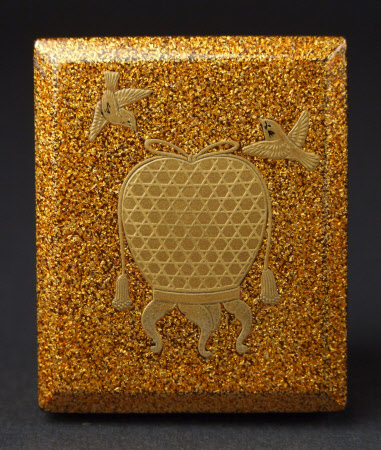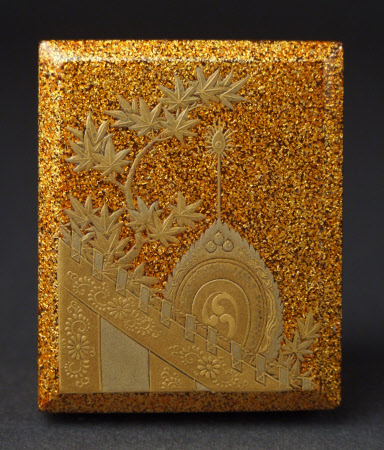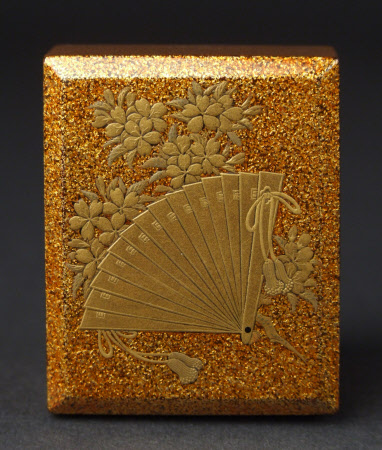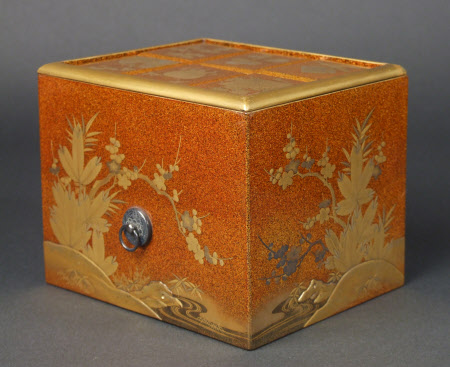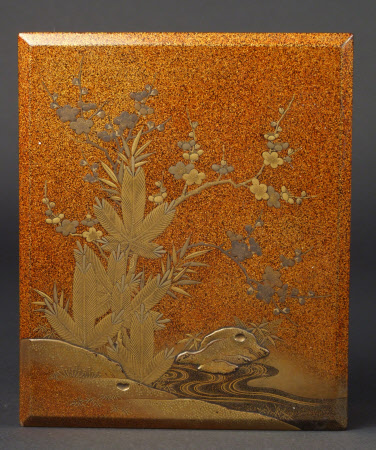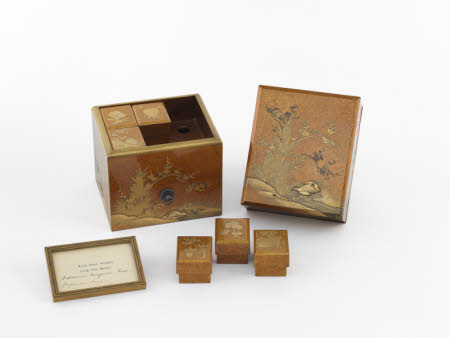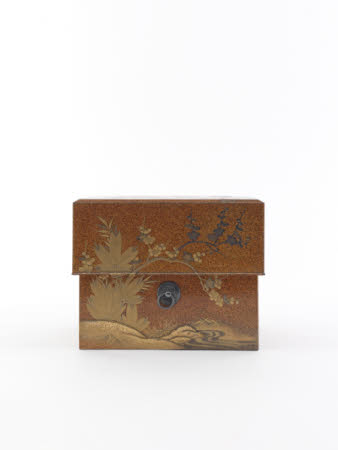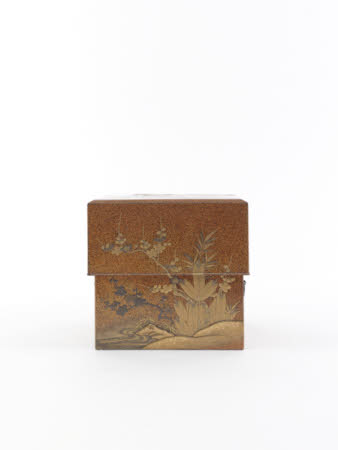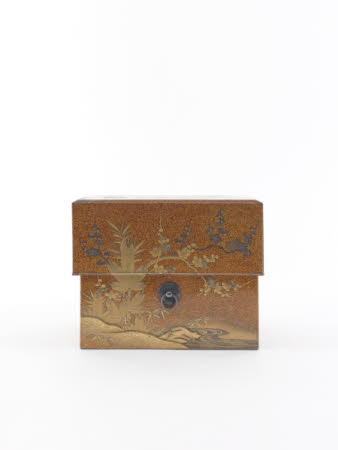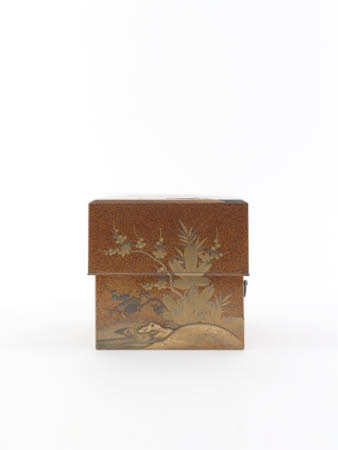Cosmetics box
Category
Objets de vertu
Date
C. 1800 - 1899
Materials
Japanese lacquer (urushi) decorated with gold and silver and with silver rings.
Measurements
35 mm (H)41 mm (W)51 mm (D)
Place of origin
Japan
Order this imageCollection
Polesden Lacey, Surrey
NT 1247162
Summary
Cosmetics box (tebako) set, of Japanese lacquer (urushi) decorated with gold and silver and with silver rings on the sides, rectangular with an overhanging lid (kabusebuta), fitted with a tray containing six smaller boxes, made in Japan, probably nineteenth century. The larger box decorated on its lid and sides with vignettes of pine, bamboo and blossoming prunus (the ‘three friends of winter’ or shōchikubai) next to a stream in gold and silver low- and high-relief lacquer (hiramaki-e and takamaki-e respectively) against a ground of orange-toned lacquer with gold flakes (‘pear-skin ground’ or nashiji). The smaller boxes decorated on their lids with (a) a spray of a large-leafed plant (rose mallow? begonia?), (b) a jar festively adorned with a cloth and a tasselled cord under a foxglove tree (Paulownia tomentosa), (c) a pair of books next to a pair of feather dusters, (d) a bamboo cricket cage with a tasselled cord and two birds flying above, (e) a hanging barrel drum used to accompany gagaku dance performances next to a maple tree and half hidden by a cloth enclosure and (f) an open folding fan next to prunus blossom. With a framed typed and hand-written card that probably accompanied the box when it was given by Queen Mary to Margaret Greville.
Full description
During the Heian period (794–1185), Japanese aristocratic women adopted the Chinese practice of using lacquer boxes to store cosmetics. Known as tebako or ‘hand boxes’, they were developed by Japanese lacquer artisans in subsequent centuries to hold face powder, rouge and materials for blackening teeth and painting false eyebrows, as well as other personal items such as combs and incense. Some tebako have metal rings on the sides through which woven silk cords can be run, to be tied on top to secure the lid. For a discussion of the tebako type of box and of the related comb box (kushibako) see Barbra Teri Okada, Symbol and Substance in Japanese Lacquer: Lacquer Boxes from the Collection of Elaine Ehrenkranz, New York and Tokyo, Weatherhill, 1995, pp. 25–6 and cat. 14, pp. 74–5. For a similarly shaped and decorated tebako see the example in the Metropolitan Museum, New York, acc. no. 10.7.15.
Provenance
Given by Queen Mary (1867–1953) to Dame Margaret Greville DBE (1863–1942) and bequeathed by the latter to the National Trust. Listed as being in the Tea Room at Polesden Lacey in the 1943 probate inventory (p. 29).
Marks and inscriptions
To lift out small boxes, take out / tray and push finger through hole at bottom (inscribed on note inside box)

